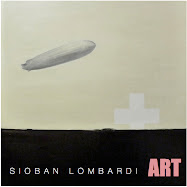Last fall, I published a piece (see “As Seen on Oprah”, October 2009) on the events that led to the conception of my Thesis work. Angel Valley is the name of a retreat center in Sedona, Arizona. There, in October 2009, three people died in a makeshift sweat lodge constructed for a self-help empowerment workshop. In addition to the deaths, a number of participants were critically injured. The cost to participate in the workshop was $10,000 per individual. A one-time telecommunications-marketing manager was the workshop’s creator and facilitator. He has been indicted on three counts of manslaughter and is preparing for trial in Arizona.
This body of work references my own examination of manufactured, misplaced and inadequate constructs. The constructs are often the byproduct of the search for utopia that in fact, cannot be assembled in the physical or material world. Within my work, time, recollection and longing are collapsed, illuminating the irrationality of invented utopias and locating the site of physical presence in time and space.




